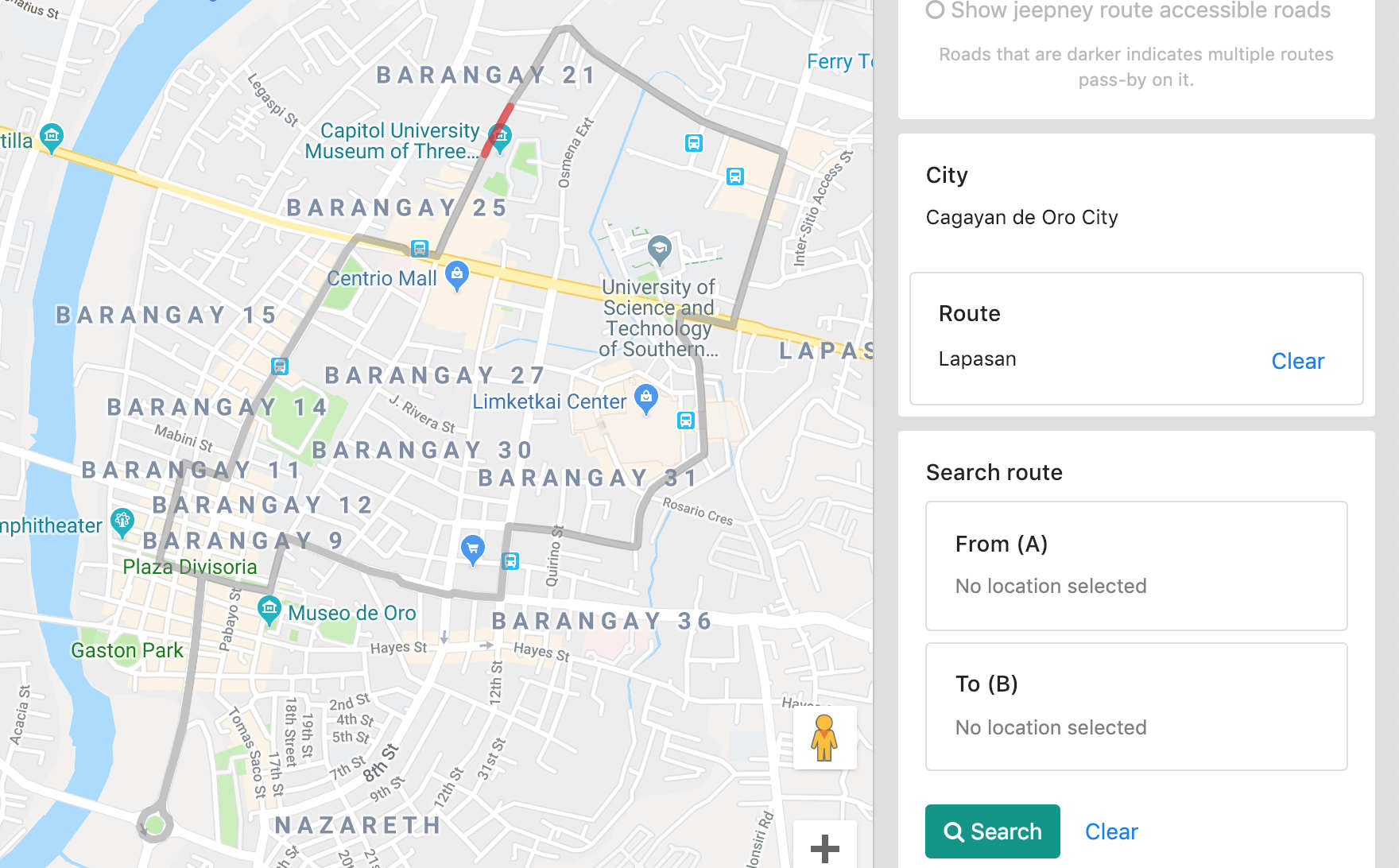This is a personal project that involves me learning Elixir and Dijkstra's path-finding algorithm.
There are two main features right now:
- Jeepney route search - users can specify two points within the city, and the it will return the shortest jeepney route(s) to take.
- Jeepney route listing - users can view jeepney routes within the city.
In the Philippines, a Jeepney is a commonly used public transport. They have defined routes within the city so people can access different areas within the city by taking a single or multiple routes of a jeepney.
The application code is setup to run directly on the host machine. The database layer is the only component hosted in docker for ease of installation.
The following are the requirements for the application environment. See user_data.txt for the installation commands.
- Erlang and Elixir
- Node 6.12.x
- Docker and Docker Compose (only used for the database)
- Mix hex/phoenix
- PostgreSQL (as a docker image)
-
Clone the application
-
Create the following directories and
.envfile:./database_docker_volume./database_dumps./.env
-
(When needed) If there's a database dump for the application to use, make sure to uncomment
docker-entrypoint-initdb.dindocker-compose.ymlso the application will be preloaded with the dump database in./database_dumps.This should be done only for the initial docker image build so make sure to comment the
docker-entrypoint-initdb.dagain on succeeding deployments. -
Run the database containers
docker-compose up -d -
Install phoenix dependencies
./run_app_init.sh -
Run the server
./run_phxserver.py --detachedThis helper script just retrieves the environment variables defined in
.envand prepend it as flags when runningmix phx.server. So it is important that.env's is targeting development or production.If the application can't connect to the database layer. Run this command with
sudo.
Since the application code is running locally. Updating is as easy as pulling from the remote repo.
git fetch --all && git pull origin master
If replacing the database do:
-
Kill the docker database container.
docker-compose down -
Delete and recreate directory
database_docker_volume -
Repeat step 3 in the deployment steps.

